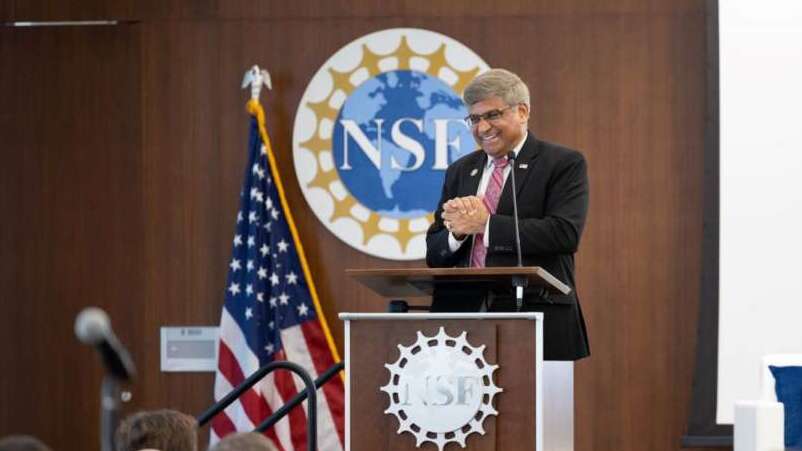
The National Science Foundation (NSF) on Friday announced its initial $5 million investment across five quantum pilot projects, taking the first steps toward creating the NSF National Quantum Virtual Laboratory (NQVL).
NSF’s NQVL – founded as part of 2018’s National Quantum Initiative Act – is a first-of-its-kind national resource to enable faster discovery and development of use-inspired quantum technologies.
“The NSF National Quantum Virtual Laboratory represents a new approach NSF is taking to facilitate the complex and multistep process of translating new scientific ideas into fully developed technologies that benefit society,” said Acting NSF Assistant Director for Mathematical and Physical Sciences Denise Caldwell. “As a shared national resource, NQVL will also surmount the limitations inherent in using solely brick and mortar facilities – any qualified researcher or student can participate, regardless of where they are in the U.S.”
With initial 12-month timelines, the five new pilot projects – funded at $1 million each – are led by quantum experts and others with diverse backgrounds spanning academia, industry, national labs and government. Five more pilot projects are expected to be announced later this year.
According to NSF, the NQVL will broaden access to specialized research infrastructure by functioning as a geographically distributed national resource.
“U.S. competitiveness hinges on accelerating the translation of technological innovations into the market and society, as well as training the American workforce for the jobs of tomorrow,” said Erwin Gianchandani, NSF assistant director for Technology, Innovation and Partnerships.
“Through NQVL, NSF will invest in resources that will allow for research and experimentation of novel quantum technologies, opening new opportunities across a range of disciplines from new material discovery to health care interventions, all while providing critical workforce development opportunities to fill the quantum jobs anticipated over the next decade,” Gianchandani added.
The first five pilot projects represent a range of collaborations between academia and the Energy Department’s national labs:
- Wide-area quantum network to demonstrate quantum advantage: this team aims to build a long-distance 10-node quantum network that would help enable secure and privacy-preserving communications systems.
- Quantum advantage-class trapped ion system: this team will create a 256-qubit ion trap quantum computing system that will be controllable over the internet and capable of running a wide range of quantum simulations and computations.
- Deep learning on programmable quantum computers: this team will develop quantum computing platforms with more than 100 qubits to solve problems in chemistry, advanced materials, and physics.
- Quantum sensing and imaging lab: this team will develop quantum sensors based on two-dimensional trapped-ion arrays that will advance frequency metrology, with applications including telecommunications and navigation, terahertz imaging used in astronomy and medicine, and other areas.
- Quantum computing applications of photonics: this team will make quantum computers on chips using monolithically integrated quantum photonics to develop this technology into a commercially viable product.
The pilot project teams will be invited to submit additional proposals for NSF’s latest NQVL funding solicitation. The teams selected to receive NSF funding will design and use testbeds to refine their methodology, create prototypes of quantum-based technologies, and advance their projects to the next stage. The team’s activities will be coordinated by a central hub that NSF expects to select later in the NQVL development process, NSF said.
In line with the directives from the National Quantum Initiative Act, NQVL will also provide workforce training and education opportunities to grow the U.S. STEM workforce throughout its lifecycle.
